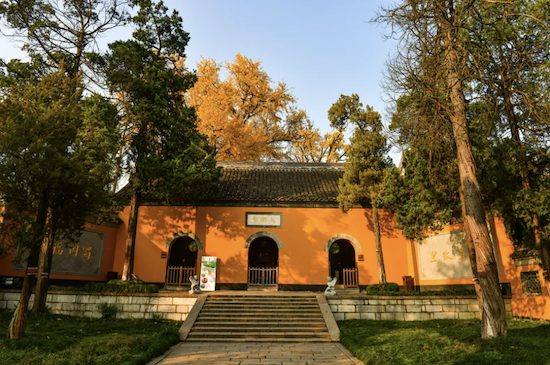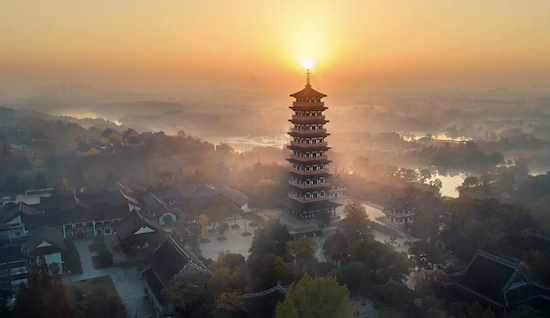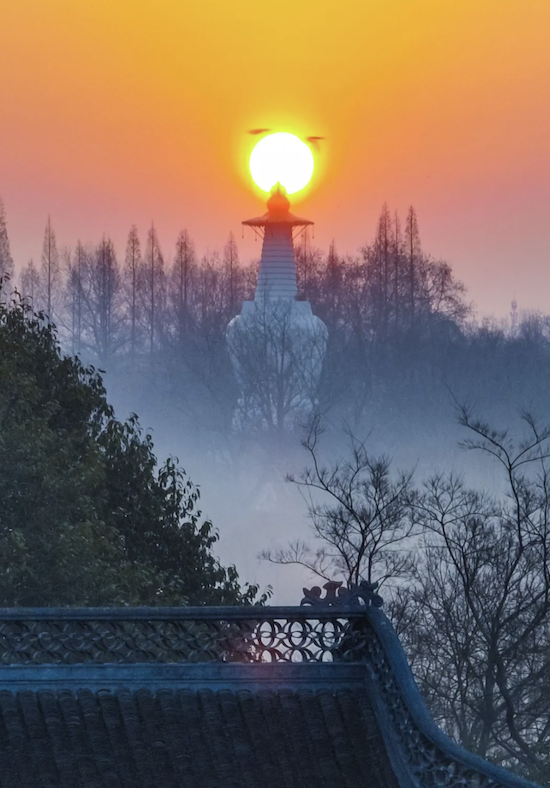Since the global release of the Chinese 3A game "Black Myth: Wukong", it has swiftly gained popularity, with its highly authentic depiction of traditional Chinese architecture, such as ancient temples and pagodas, standing out as a major highlight. Interestingly, Yangzhou, an ancient city in China's Jiangsu province, boasts real-life counterparts to some of the ancient structures featured in the game.
Daming Temple
The renowned Daming Temple, perched atop the middle peak of Shugang Mountain in Yangzhou, derives its name from its initial construction during the Daming reign (457-464) of the Southern Dynasty (420-589).

Daming Temple in autumn. [Photo/WeChat account: yzs_lyj]
Qiling Pagoda
The Qiling Pagoda, constructed initially in 601 AD during the Sui Dynasty (581-618), was later damaged. The current pagoda, rebuilt in 1994, is located within the Daming Temple. Standing nine stories tall and reaching a height of 70 meters, it is the tallest pagoda in the city's main urban area.

Qiling Pagoda stands out and is bathed in sunlight. [Photo/WeChat account: yzs_lyj]
White Pagoda
The White Pagoda, located by Slender West Lake in Yangzhou, rises to 27.5 meters. Legend has it that the pagoda was built overnight by a salt merchant, modeled on the famous White Pagoda at the Beihai Imperial Garden in Beijing, and inspired by Emperor Qianlong of the Qing Dynasty (1644-1911).

White Pagoda in mist. [Photo/WeChat account: yzs_lyj]